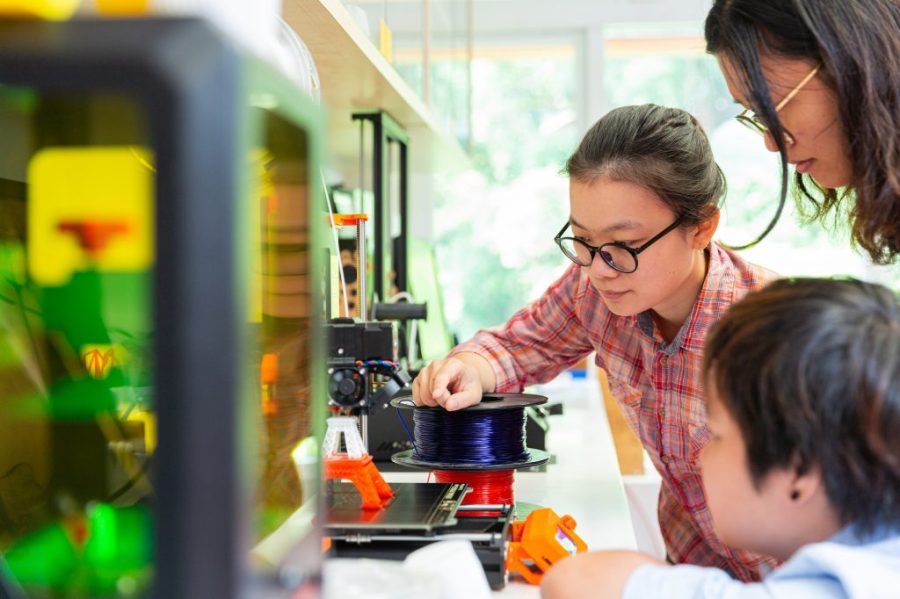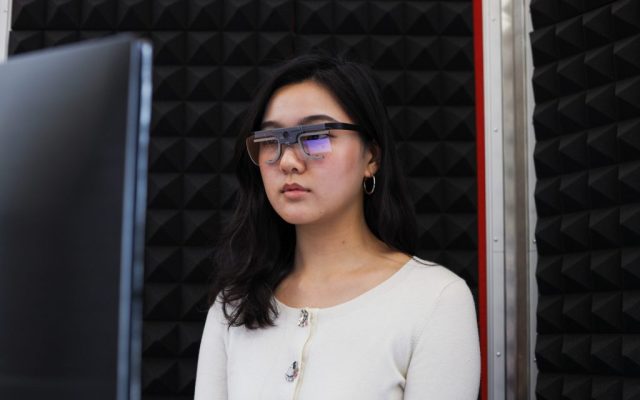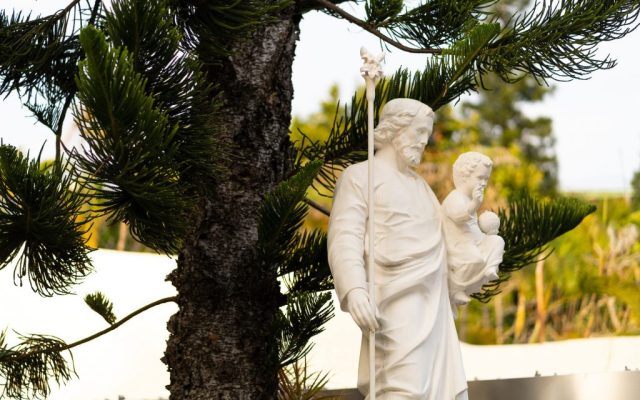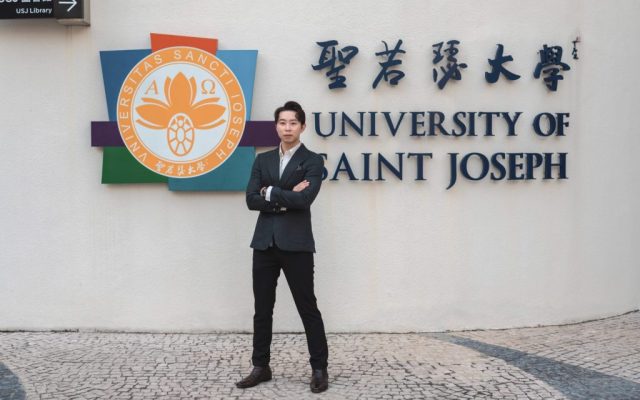Product designer João Alfonso was shocked when he received a text from his professor in November that read: “Congratulations! Good job!” A few months prior, the 24-year-old had entered the 2021 Zhongshan Industrial Design Competition. Turns out, his product design beat out 300 professional teams and organisations across the country to take the top prize.
“It was unbelievable. It took me three days to process [the news]. It’s not even a finished product yet!” the recent University of Saint Joseph (USJ) graduate mused.
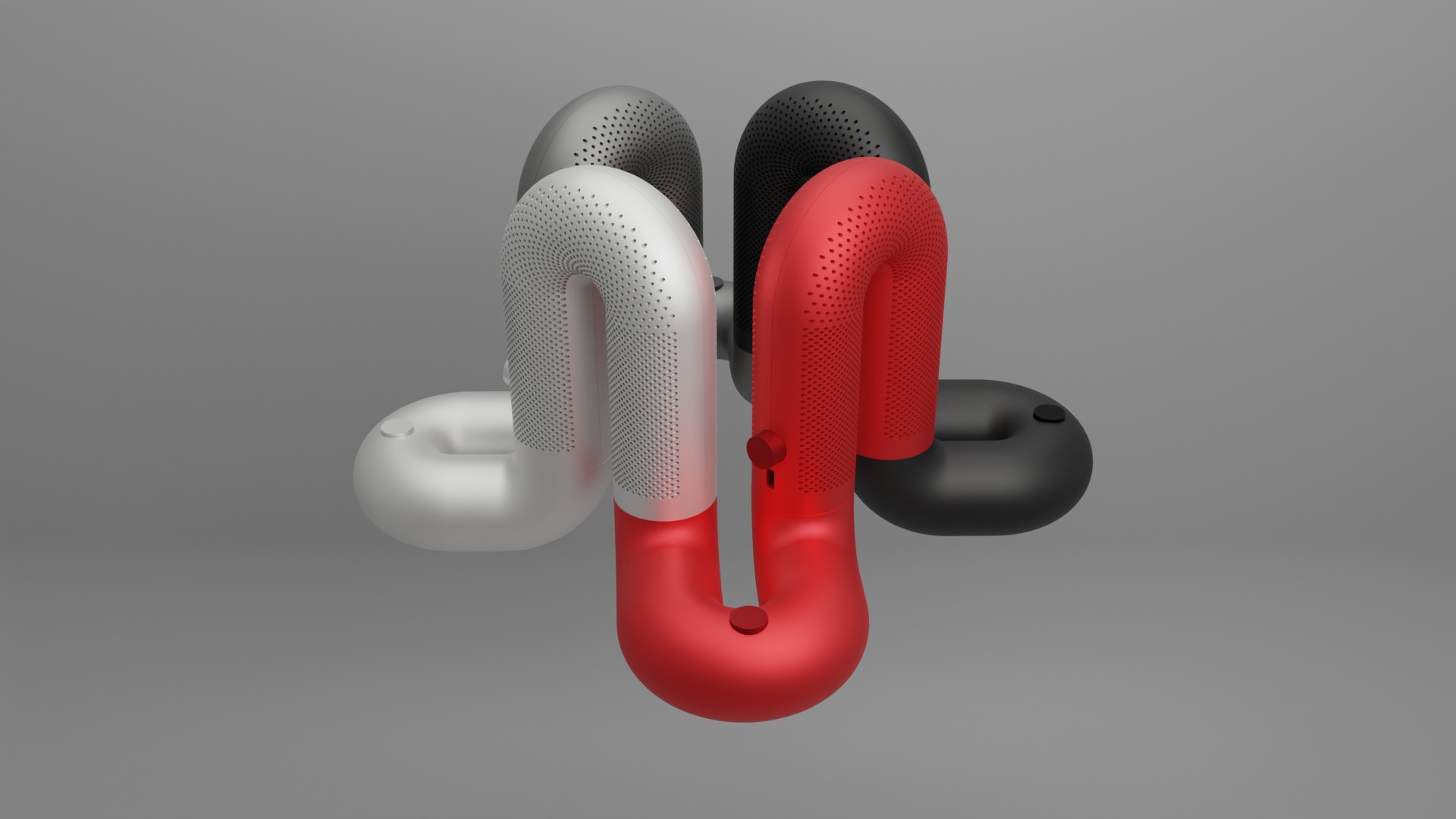
Alfonso’s winning design is a prototype of a modular Bluetooth speaker system, which he conceptualised for his Bachelor of Design capstone project. The product, named “Sero”, reimagines the portable speaker. The U-shaped speaker system comes in four colours – red, black, white and grey – and uses magnets to connect the different units. That way, users can custom-build their desired shape and even create a surround sound system.
“I wanted to incorporate magnets because, to me, they represent connection [the USJ capstone project’s theme], but also have a functional use,” explains Alfonso. “I had 100 sketches of different shapes for the speaker, but ultimately, I went with this one because it was inspired by pipes. Pipes are modular by nature – they are good building blocks because, depending on how you fit them together, the overall shape will also change.”
Training Macao’s design talent
Alfonso’s Sero speaker system represents the culmination of everything he learned at USJ while earning his bachelor’s degree from 2017 to 2021. The four-year programme immerses students in four cornerstones of design: graphic, digital, product and furniture.
Graphic and digital design harness multimedia elements to create products such as brochures, posters, and physical installations for retail stores or art exhibitions. Meanwhile, product and furniture design focuses on improving everyday objects, from lamps to mugs – even the device you are reading this on.
An interest in art and illustration inspired Alfonso to enrol in the USJ course, but the programme deepened and expanded his passion by introducing him to the world of design theory, research and psychologically-driven design choices. It made him realise that design is everywhere, all around us, and most design choices have a purpose.
“Food branding contains a lot of orange, red, and yellow colours because seeing these colours makes you hungry and think of food. It’s a scientific fact. That psychological aspect made me more interested in design,” he recalls.
In addition, Alfonso studied entrepreneurship and branding modules, which he feels will serve him well in the future because he aspires to practice the field of industrial design (developing concepts for manufactured products) and, one day, launch his own electronic products.
Alfonso feels drawn towards industrial design, in particular, because it enables him to gradually transform and improve everyday products. “There are many things that we have now and we can always change them. That’s what’s so interesting about the design industry,” he adds. “There are products everywhere. You can make little changes to them each time, and they will eventually evolve into something else in the future.”
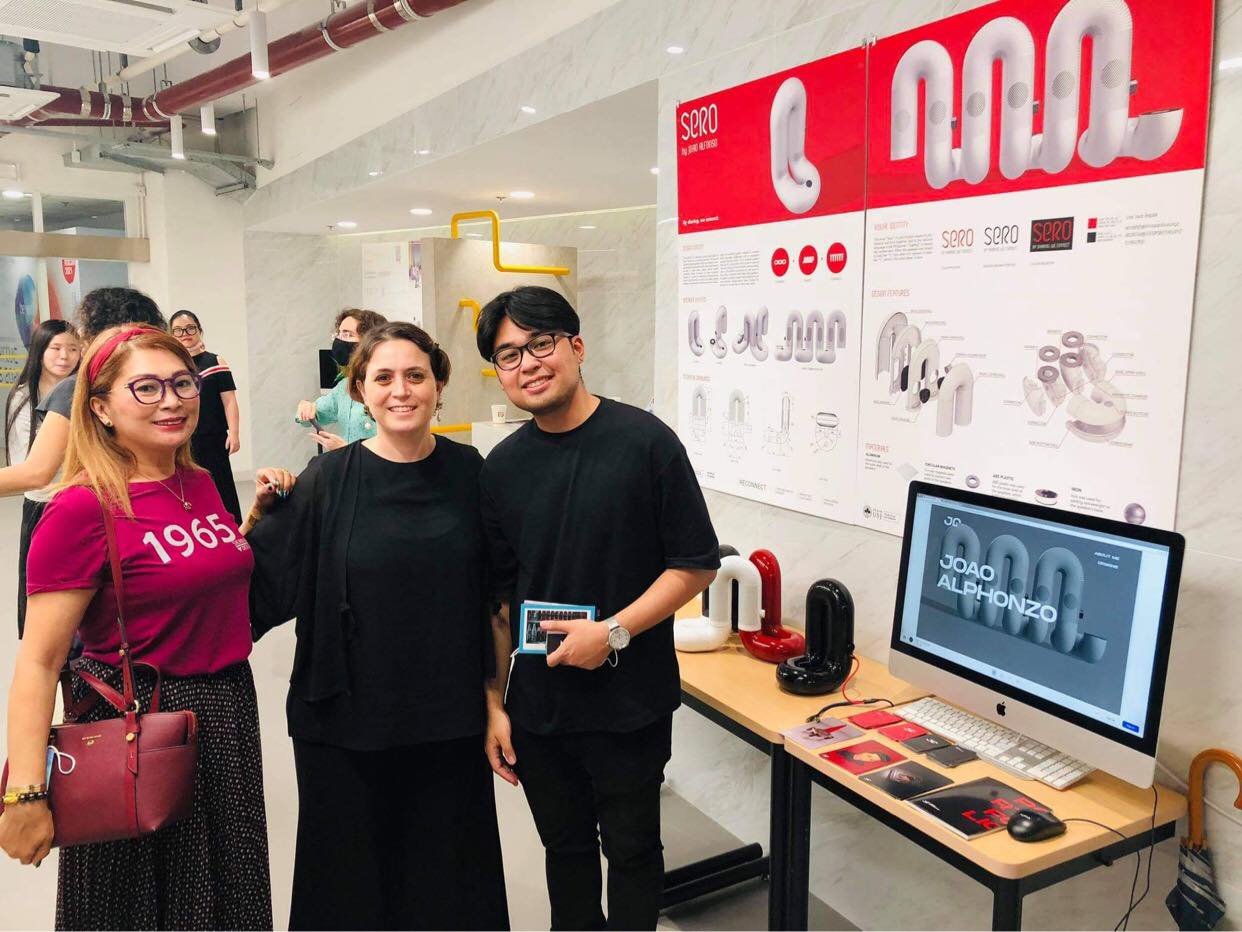
The degree also armed him with valuable practical knowledge and digital skills, which are essential to succeed in the design world. For example, during his time at USJ, Alfonso learned how to use professional software and 3D-modelling tools, such as Adobe Illustrator and Fusion 360, to build products like his modular speaker.
Alfonso had access to USJ’s design labs, which feature a range of state-of-the-art equipment such as 3D printers, laser cutters, vinyl cutters, and robust iMac computers that can run power-intensive 2D and 3D-design software.
“The faculty try to get new equipment whenever they have the chance to,” he says. “When I was at USJ, we received new 3D printers every year. Now, I think they are working on expanding the digital fabrication lab, which houses all the tech that is needed to make products.”

Community-inspired design
Filipa Martins, the USJ Design’s undergraduate and graduate programme coordinator, says the school’s programmes also stand out because of the staff and regional connections. USJ employs an international faculty who prepare Macao students to thrive professionally, abroad and in the Greater Bay Area, by highlighting Chinese culture alongside global design standards.
“Nearby cities like Shanghai and Shenzhen have great design backgrounds and these are excellent places for designers to go and learn from,” Martins enthuses. “With Macao being so near, we can have very good connections with faculties and universities there.”
The USJ has established partnerships with several higher education institutions around greater China, often sending staff to teach workshops and collaborate on research. Although the university has a quota on enrolling students from the mainland, the University and the Faculty regularly invite students from other schools to visit the campus and encourage collaborations.
At the same time, Martins, who is a professional designer herself, also strives to honour Macao’s European influences. “Macao also has heritage from the Portuguese, so we have to include that in our designs,” explains the Portuguese native. “We have a great partnership with Católica University in Portugal. We cannot let that heritage perish, so one of the things I tend to do is to bring Chinese and Portuguese culture together.”
Several classes enable students to tap into the city’s Portuguese past. For example, students have conducted academic research on the use of Portuguese patterns and textures in design.
In addition, USJ staff encourage students to design products with the local community in mind.
“We always have Macao as a setting for our projects,” says Martins. “Because most of our students are from Macao, we often ask students to draw from their personal experiences when approaching assignments, so they can connect more to the city.”
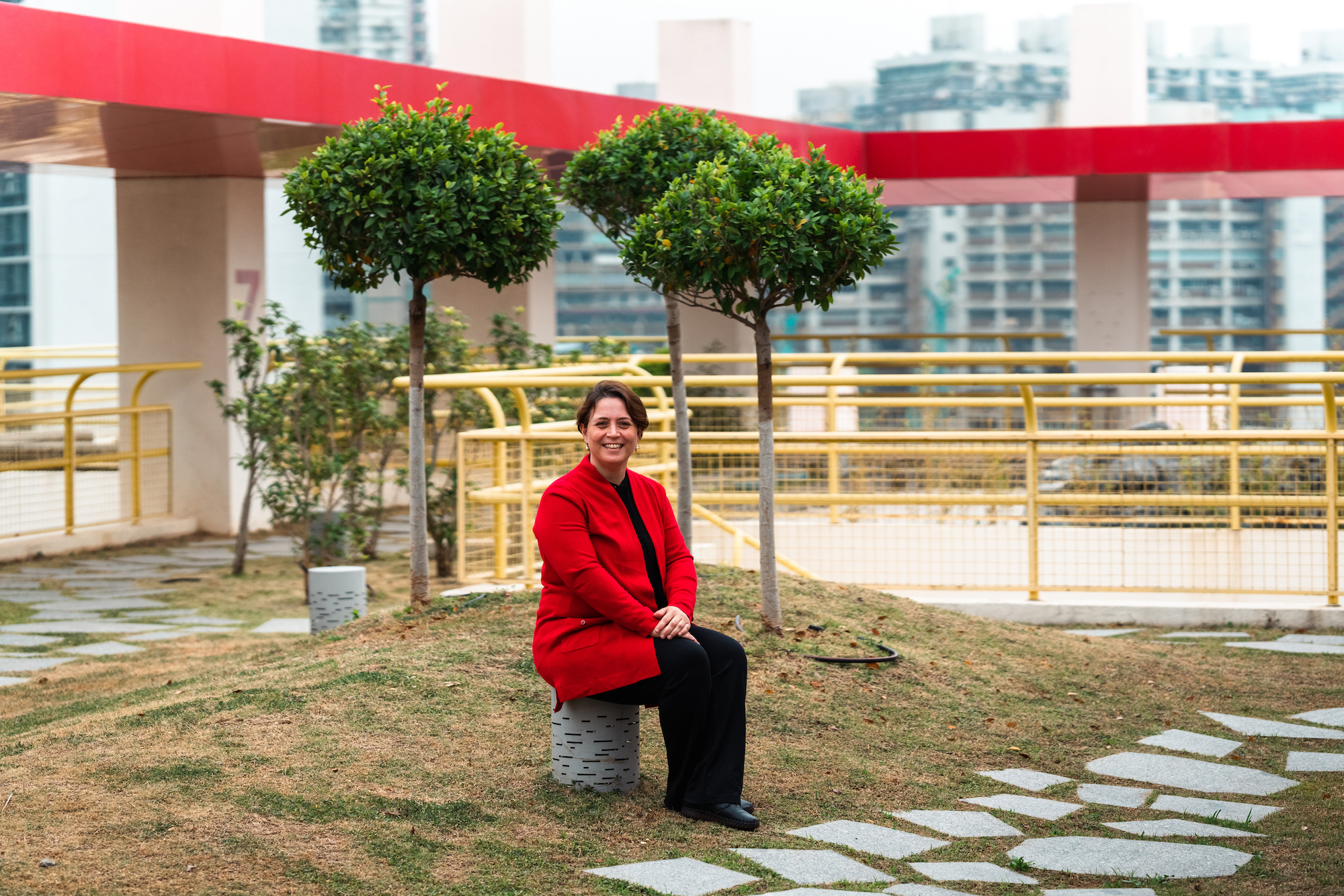
The community is an integral part of product research. As part of their final projects, students survey Macao residents about their ideas for products to collect opinions. Just like market research, this exercise helps students gauge public opinion, improve their product and determine design choices, such as what colour to use and which functionalities to add or exclude.
Since USJ’s design programmes emphasise sustainability, this process is crucial in determining whether a product serves a need or not. “If you don’t ask your subject or user what they need, it’s really useless to create that product,” she adds.
Regional recognition
The class of 2021’s capstone projects, led by Professor Filipa Simões, showcase what local designers can achieve when they have free rein to create products for their community.
Students interpreted the prompt,“Connection”, in different ways. For instance, Alfonso created his speaker system with the idea that people need music in order to reconnect after two tumultuous years of the Covid-19 pandemic. One of his peers created a public water dispenser called “Be Water”, which uses solar power to heat water for tea-loving Macao residents.
Alongside Alfonso, several other students have been recognised for their capstone projects. In December 2021, the Jiangmen Art Museum featured the works of fellow bachelor’s graduates, Skylar Tai and Grania Cheong, as part of the 6th Guangdong Biennial Academy Awards Exhibition of Higher Education Design Works.
Tai’s product, “Hea”, is a freeform chair that can be configured into four different positions, depending on the situation. Tai wanted to create a chair that could be just as flexible as the user’s needs – especially since more people are working from home during the pandemic.

For her capstone project, Cheong designed a collection of urban furniture for children, called “Play in Line”, which can be used in Macao’s public parks. What’s more, Cheong’s design recently won an award from the 7th Macao International Design Exhibition.
Martins believes it’s important for USJ students to enter regional competitions because it pushes them to improve and, ultimately, elevates local design.
“Macao’s design industry is growing, and it’s growing fast,” says Martins of the local industry. Over the past few years, Martins has observed an uptick in locally designed goods for sale in the city’s cafes and artisan shops. And the spaces themselves often feature interior design by local talents.
“We should embrace that. The government is trying to help in this area by organising various competitions and awards but more resources could be allocated to design [to help bring product concepts to life and incentivise designers].”
Meanwhile, six months after graduating, Alfonso is currently working as a freelance graphic designer for local artists, such as Ari Calangi, and independent brands like candlemaker Wickd. Feeling motivated after his recent win, Alfonso hopes to build a career in electronic product design while providing graphic design services on the side.
Being recognised by a major regional award has already helped him establish his reputation as a designer to watch. “My design principle is to always put your work out there. As long as it’s out there, it will evolve into something else and someone might take inspiration from it… and practice,” says Alfonso. “Practice beats talent; that’s what I think.”

